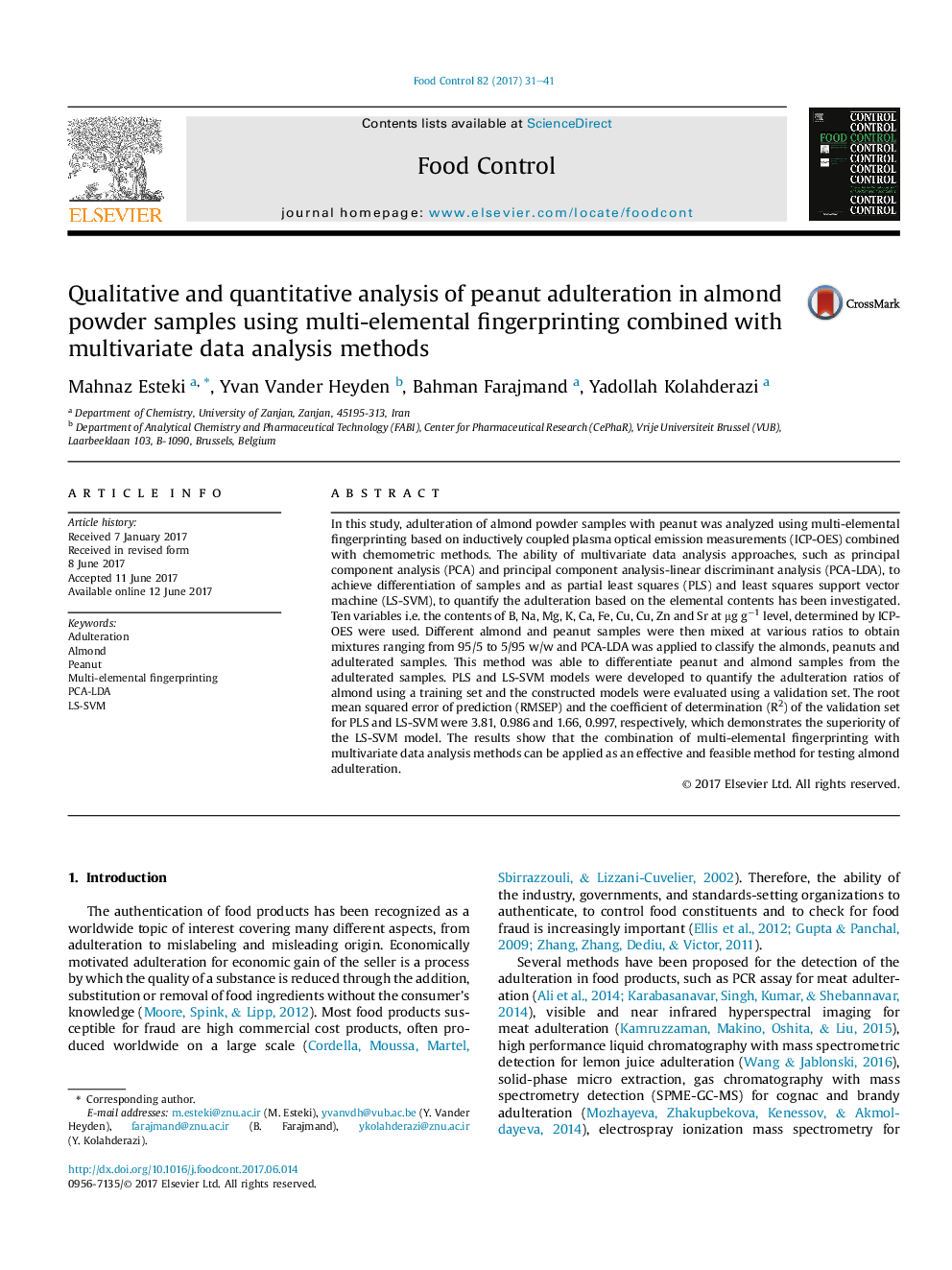| کد مقاله | کد نشریه | سال انتشار | مقاله انگلیسی | نسخه تمام متن |
|---|---|---|---|---|
| 5767131 | 1628382 | 2017 | 11 صفحه PDF | دانلود رایگان |
- Detection of peanut adulteration in almond powder by multi-elemental fingerprinting.
- PCA and LDA were able to differentiate the adulterated samples.
- Detection of adulteration up to the level of 5% was possible using LS-SVM model.
- The effective elements in differentiating almond and peanut samples were determined.
In this study, adulteration of almond powder samples with peanut was analyzed using multi-elemental fingerprinting based on inductively coupled plasma optical emission measurements (ICP-OES) combined with chemometric methods. The ability of multivariate data analysis approaches, such as principal component analysis (PCA) and principal component analysis-linear discriminant analysis (PCA-LDA), to achieve differentiation of samples and as partial least squares (PLS) and least squares support vector machine (LS-SVM), to quantify the adulteration based on the elemental contents has been investigated. Ten variables i.e. the contents of B, Na, Mg, K, Ca, Fe, Cu, Cu, Zn and Sr at μg gâ1 level, determined by ICP-OES were used. Different almond and peanut samples were then mixed at various ratios to obtain mixtures ranging from 95/5 to 5/95 w/w and PCA-LDA was applied to classify the almonds, peanuts and adulterated samples. This method was able to differentiate peanut and almond samples from the adulterated samples. PLS and LS-SVM models were developed to quantify the adulteration ratios of almond using a training set and the constructed models were evaluated using a validation set. The root mean squared error of prediction (RMSEP) and the coefficient of determination (R2) of the validation set for PLS and LS-SVM were 3.81, 0.986 and 1.66, 0.997, respectively, which demonstrates the superiority of the LS-SVM model. The results show that the combination of multi-elemental fingerprinting with multivariate data analysis methods can be applied as an effective and feasible method for testing almond adulteration.
Journal: Food Control - Volume 82, December 2017, Pages 31-41
